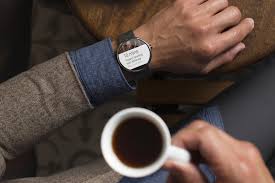Even in the short time that we have been keeping this blog, the evolution of the wearable world has been outpacing the ability to keep informed.
Apple has a new iWatch,or maybe not. Healbe (Gobe) can measure glucose content in the blood, or maybe not. Google glass is a bust, or maybe not. Nike is no longer in the wearable hardware market and Jawbone may be for sale, or maybe not.
So can one wearable device fit all people and provide answers to all questions health related?
Of course the answer is yes. Or maybe not.
It all depends on who you’re asking and what they require from the device.
As it stands now the vast majority of individuals who have wearable fitness monitors use these only to count steps taken during the day.
However, as previously discussed, step-counts only provide part of the picture of physical activity and physical exertion using upper extremities, for example cycling and strength training are not as well discerned by most monitors.
There seem to be two broad camps in regards to monitoring: the cardio-fitness focused, who seem to fall more in the high level, elite athlete, competitor category; and, the general fitness and general health focused individuals who are interested in getting a little support in their modest goals to be healthy.
Recently, manufacturers have begun to realize that different physical movements have different patterns of accelerometer output (really!!), and that there is a potential to train and capture this data in a meaningful way.
This is either done by a learning function on the device or pre-loaded exercise patterns. Adding heart rate monitors and skin sweat monitors also seem to be important features.
In some ways combining heart rate monitors with activity monitors is somewhat redundant.
If cardiovascular fitness is your goal, the definition of success is reaching and maintaining a target heart rate regardless of what type of activity you are performing.
The heart acts as it’s own monitor in regards to physical ability and to ignore the heart rate monitor and focus on activity counts is probably not wise, and may be dangerous.
However, if understanding and tracking overall level of physical activity over a set period of time is the goal, using any activity monitor that gives reasonably accurate measures is probably sufficient and anything more complex becomes increasingly difficult to interpret.
So, to answer the original question, more methods of monitoring in one device lead to more complex analysis, which may not be what an individual needs for their immediate fitness and health goals.
So even the simplest monitor (the pedometer, or the pedometer app in your phone) can provide enough useful information to improve your health, if used with regularity and planning.
Notwithstanding all that I have written, some people just like to have cool things on their wrist that do everything available and make them look like uber gods of sport and fitness.
Of course, I don’t know anyone like that…do you?







… [Trackback]
[…] Read More Infos here: vivametrica.com/2014/05/what-wearable-will-wear-well-on-me/ […]